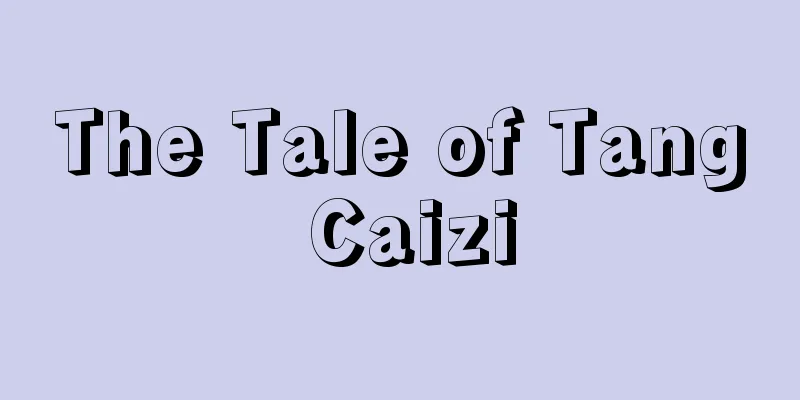Ryoma Sakamoto

|
A patriot of the late Edo period. With the arrival of Perry as a backdrop and the rise of the Sonno Joi (revere the Emperor, expel the barbarians) movement, he interacted with many people and painted a vision for Japan's future with an international perspective that went beyond the idea of expelling the barbarians. While repeatedly fleeing and returning to his domain, he was instrumental in the opening of Katsu Kaishu's Kobe Naval Training School, and came up with the idea of gathering young ronin (masterless samurai) to found a navy and to set up a joint-stock company through maritime trade. In 1865 (the first year of the Keio era) he founded the Kameyama Shachu in Nagasaki with the support of the Satsuma domain. He linked the Satsuma and Choshu domains, which were in conflict with each other, for practical gain, and in 1866 the Satsuma-Choshu Alliance was formed, which became a major step towards the overthrow of the shogunate. Thanks to the efforts of Goto Shojiro, a councilor of the Tosa domain, the Shachu was elevated to the status of the Kaien-tai, a trading company attached to the Tosa domain and a naval training facility. The plan for a new government after the overthrow of the shogunate that he and Goto came up with was known as the "Senchu Hachisaku," which Goto submitted to the shogunate through the Tosa clan, and in 1667, Tokugawa Yoshinobu was ordered to return power to the emperor. One month later, he was assassinated by a sword without having seen the future of Japan. There are many theories about the assassin, and it remains a mystery. In 1904 (Meiji 37), during the Russo-Japanese War, a newspaper article made headlines, stating that Sakamoto Ryoma appeared in the dreams of Emperor Meiji's Empress Haruko (Empress Dowager Shoken) and announced the protection of the Imperial Navy. Ryoma's deeds had been known to the general public in 1883, when Sakazaki Shiran wrote a biographical novel, "Kanketsu Senri Koma." Since then, a steady stream of Ryoma biographies and novels have been published. According to the National Diet Library's search system, there are over 400 books related to Ryoma in its collection, and there are countless movies, plays, and TV programs featuring Ryoma. Historical novelist Shiba Ryotaro has made a major contribution to creating the modern image of Ryoma. His epic novel "Ryoma Goes Forward" was serialized in the Sankei Shimbun newspaper for four years from 1962 (Showa 37), sparking a huge Ryoma boom. In 1968 it was made into a historical drama starring Kitaoji Kinya. Shiba pored over a huge amount of historical material related to Ryoma, and created a portrait of a man who could be described as flesh and blood. He had the economic sense he developed as a result of being born into a merchant samurai family in Tosa, and a free and easy-going personality that was not bound by the outdated class system. He had the drive to travel freely around Japan at the end of the Edo period, an ability to gather information, and an impressive way of building personal connections. He was not limited to a domestic perspective such as the clans, anti-foreigner policies, and support for the shogunate, but had an enterprising attitude that looked overseas. He placed importance on aspirations, not status. Furthermore, the new image of Ryoma created by Shiba's portrayal of him, such as his superb crisis management when handling a shipwreck at sea, has made him an ideal figure for leadership among politicians and business leaders, and he has frequently been featured alongside other Sengoku period warlords in not only historical magazines but also economic magazines. Since the decision to broadcast the NHK historical drama "Ryomaden" from January 2010, the Ryoma boom has been on its second time. With the popular actor and singer Masaharu Fukuyama playing Ryoma, coupled with the boom in history buffs and history idols since around 2009, Ryoma is attracting attention from people of all ages and genders. A mobile survey of 2,000 people aged 15 to 59 conducted by a survey company at the end of 2009 showed that 99.4% of people knew about Ryoma, and 41.6% said they "respected him," proving Ryoma's national popularity. There are more than 120 Ryoma fan clubs and study groups called "Ryomakai" across the country, which have become a place for people to interact beyond just being history buffs. The statue of Ryoma that stands at Katsurahama in Kochi City was erected in 1928 through the efforts of local young volunteers. On November 15, 2003, Kochi Airport was nicknamed Kochi Ryoma Airport. Behind the scenes was a petition campaign by volunteers, including the Kochi Prefecture economic organization, who wanted to name the airport after the local hero, and lobbied the prefecture. This is the first airport in Japan to be named after a person. He was born on November 15, Tempo 6 (January 3, 1836) and died on November 15, Keio 3 (December 10, 1867). (Ryoko Shiizaki, Freelance Writer / 2010) Source : "Chiezo" published by Asahi Shimbun Publications Co., Ltd. About Chiezo |
|
幕末の志士。ペリー来航を背景に尊皇攘夷(じょうい)運動が高まる中、多くの人士と交流し、攘夷論を超えた国際的視野に立つ日本の未来像を描いた。脱藩と帰藩を繰り返す中で、勝海舟の神戸海軍操練所開設に尽力、若手浪人を集めて海軍創設と海上交易による株式会社設立の構想を持った。1865(慶応元)年には薩摩藩の援助の下、長崎で亀山社中を設立。対立関係にあった薩摩・長州両藩を実利で結び、66年薩長同盟が成立、倒幕への大きな布石となる。社中は土佐藩参政の後藤象二郎の尽力で、土佐藩づき商社であり海軍教育施設としての海援隊へと昇華した。倒幕後の新政府案を後藤と構想したものがいわゆる「船中八策」と呼ばれ、後藤から土佐藩を通じて幕府に建白、67年に徳川慶喜をして大政奉還をせしめるに至った。その一月後、日本の未来を見ぬまま凶刃に倒れた。暗殺犯については諸説ありいまだ謎を残す。 1904(明治37)年、日露戦争のとき明治天皇の皇后美子(はるこ)(昭憲皇太后)の夢枕に坂本龍馬が立ち、皇国海軍の守護を告げたとされる新聞記事が世間をにぎわせた。龍馬の事跡はこれに先立つ1883年には坂崎紫瀾著の伝記的小説『汗血千里駒』として一般人の知るところとなっていた。以後龍馬の伝記、小説の類は連綿として出版され続ける。国会図書館収集の龍馬関係書籍は検索システムによれば400件を超え、龍馬を登場させる映画、演劇、TV番組も枚挙にいとまがない。 現代的龍馬像を作り上げたのは、歴史小説家司馬遼太郎氏の功績が大である。長編大作『竜馬がゆく』は1962(昭和37)年から4年間にわたり産経新聞に連載され、一大龍馬ブームを巻き起こした。68年には大河ドラマ(北大路欣也主演)となった。司馬氏は龍馬関連の膨大な史料を読み込み、生身といっていい人間像を立ち上げた。土佐の商人郷士の家に生まれたことで培われた経済感覚、旧弊な身分制度にとらわれぬ自由闊達(かったつ)さ。幕末日本を縦横無尽に飛び回る行動力、情報収集力、人脈形成術の見事さ。藩、攘夷・佐幕といった国内的視野に終始せず、海外に目を向けた進取の姿勢。身分ではなく志の重視。さらには、海難事故の処理に見られる絶妙の危機管理など、司馬氏の人物描写によって生み出された新しい龍馬像は政治家、経営者などのリーダーシップの理想像とされ、歴史雑誌のみならず経済誌などにも他の戦国武将などと並び、たびたび取り上げられるようになった。 2010年1月から放送のNHK大河ドラマ「龍馬伝」放送決定から、何度目かの龍馬ブームがおきている。人気俳優・歌手である福山雅治が龍馬を演じること、09年頃からの歴女、歴ドルブームなど歴史を愛好するムードともあいまって、老若男女問わず注目を集めている。09年末に行われたある調査会社による15歳~59歳までの2千人に対するモバイルリサーチでは、龍馬の知名度は99.4%に達し、「尊敬する」と答えた人も41.6%にのぼるなど、龍馬の国民的人気が証明された。全国には龍馬ファンクラブ・研究会である「龍馬会」が120以上存在し、歴史愛好を超えた人々の交流の場となっている。 なお、高知市桂浜に立つ龍馬像は、昭和3年に地元青年有志の尽力で建てられたものである。03年11月15日より高知空港は愛称を高知龍馬空港とした。背景には高知県の経済団体など有志が郷土の英雄の名をリニューアルする空港に冠したいとして署名活動などを行い県への働きかけがあった。日本では人名を冠した初の空港となった。 生年は天保6年11月15日(1836年1月3日)で、没年は慶応3年11月15日(1867年12月10日)。 (椎崎亮子 フリーライター / 2010年) 出典 (株)朝日新聞出版発行「知恵蔵」知恵蔵について 情報 |
>>: Sakamoto Hanjiro - Sakamoto Hanjiro
Recommend
Cat People
...As a result, playing a cat character came to b...
Litonia
A non-cold-tolerant bulbous plant of the lily fami...
Stonechat - Stonechat (English spelling)
A passerine bird of the family Flycatcher (illustr...
Edo's four great dojos
…Town dojos flourished all over the country, and ...
Afterword to Honpukuji Temple
This is a record written by Myozei, the abbot of H...
Volutharpa ainos (English spelling)
…[Tadashige Nabe]. . … *Some of the terminology e...
Reciprocating vacuum pump
The main structure is the same as that of a recipr...
purple of Cassius
…He first studied in Vienna, then organic chemist...
Badajoz - Badajoz (English spelling)
The capital of Badajoz province in the Extremadur...
King Bird of Paradise
A passerine bird of the family Caprifoliidae. Tota...
International Civil Aviation Organization
…The abbreviation for International Civil Aviatio...
Aodoji
…There are two sutras that explain Vajrayana only...
Asset Consolidation System - Shisan Gasanseido
In principle, income tax is levied on individuals,...
Vladimir Jankélévitch
French philosopher and musicologist. Born in Bour...
Aphids (fleas) - aphids (English spelling)
A general term for insects belonging to the superf...









